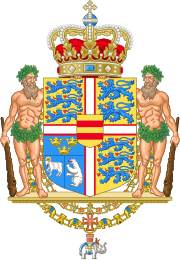From Wikipedia, the free encyclopedia
1924 Danish Folketing election
First party
Second party
Third party
Leader
Thorvald Stauning
Niels Neergaard
Emil Piper
Party
Social Democrats
Venstre
Conservatives
Last election
48 seats, 32.2%
51 seats, 34.0%
27 seats, 17.9%
Seats won
55
44
28
Seat change
Popular vote
469,949
362,682
242,955
Percentage
36.6%
28.3%
18.9%
Fourth party
Fifth party
Leader
Carl Theodor Zahle
Johannes Schmidt-Wodder
Party
Social Liberals
Schleswig Party
Last election
18 seats, 12.1%
1 seat, 0.6%
Seats won
20
1
Seat change
Popular vote
166,476
7,715
Percentage
13.0%
0.6%
Folketing electionsDenmark on 11 April 1924.[1] Social Democratic Party led by Thorvald Stauning , which won 55 of the 149 seats. Voter turnout was 78.6% in Denmark proper.[2] Faroe Islands constituency there was only one candidate, who was returned unopposed.
Results Denmark
Party
Votes
%
Seats
+/–
Social Democratic Party 469,949
36.6
55
+7
Venstre 362,682
28.3
44
-7
Conservative People's Party 242,955
18.9
28
+1
Danish Social Liberal Party 166,476
13.0
20
+2
Justice Party of Denmark 12,643
1.0
0
New
Farmer Party
12,196
0.9
0
New
Schleswig Party 7,715
0.6
1
0
Communist Party of Denmark 6,219
0.5
0
0
Industry Party 2,102
0.2
0
–3
Invalid/blank votes
4,147
–
–
–
Total 1,287,084 100 148 0
Source: Nohlen & Stöver
Faroe Islands
Party
Votes
%
Seats
+/–
Venstre -Union Party –
–
1
0
Invalid/blank votes
–
–
–
–
Total –
–
1 0
Source: Nohlen & Stöver
References






